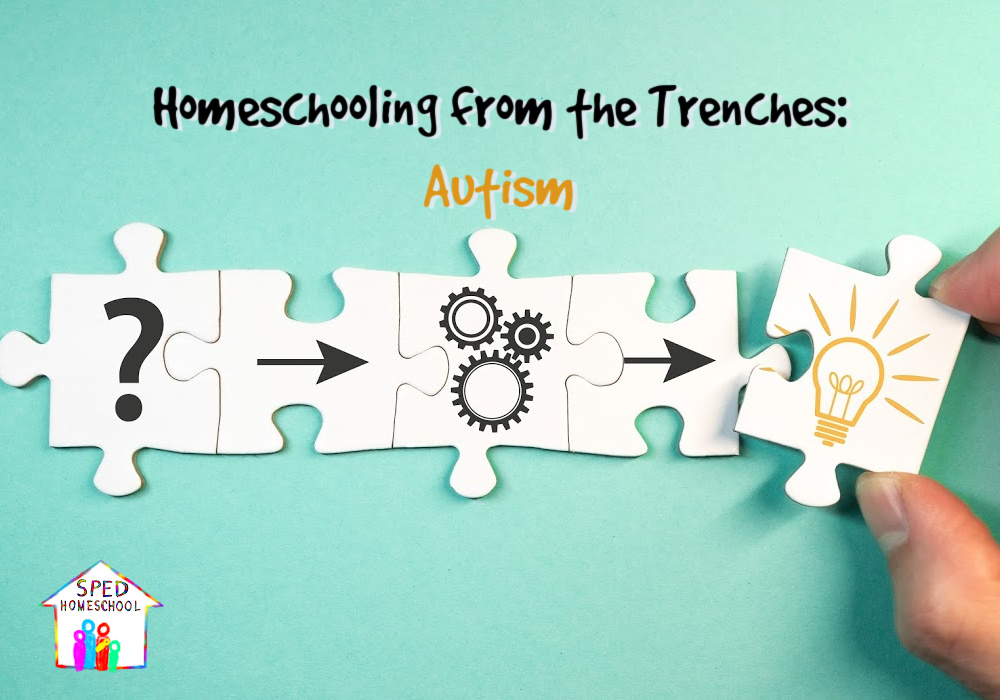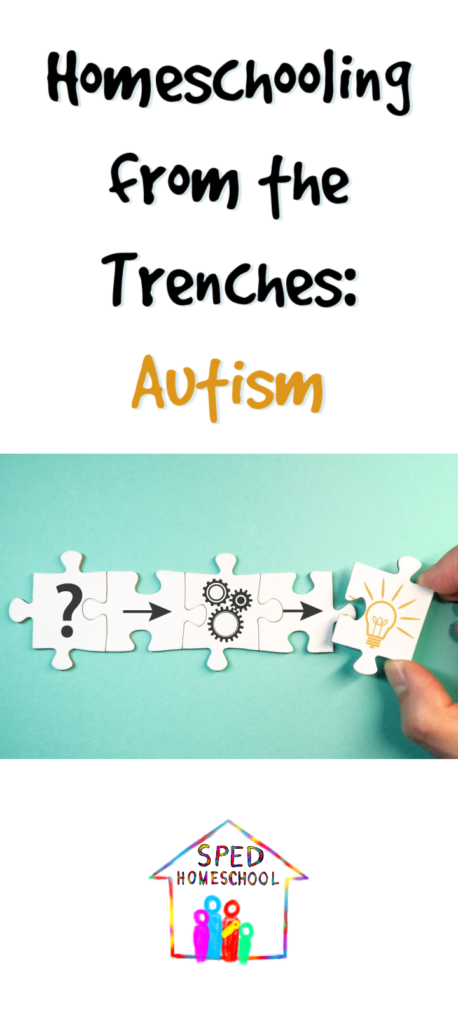
by Cheryl Swope , M.Ed., SPED Homeschool Curriculum and Consulting Partner
April is Autism Awareness Month and we here at SPED Homeschool understand how autism can affect learning and the education process. SPED Homeschool Founder and CEO, Peggy Ployhar, started their family’s homeschooling journey after their son’s autism diagnosis 19 years ago. It is our hope that our resources will empower your homeschool and your student will reach his/her full potential.
We homeschooled twins on the autism spectrum from their infancy through high school graduation. Along the way, we learned to create a daily schedule, even for weekends and summers. Our friends’ children did not need this, but our children with autism did. They appreciated the predictability and security of a gentle routine. Even today, our family finds it helpful to include all of these:
Refreshing Outdoor Time
Our children may struggle with anxiety, obsessions, compulsions, or rigidity of thought, so we need to teach them to relax. As homeschoolers, we carefully schedule schoolwork, chores, and therapies, but we may forget to schedule time in nature! Consider set times each day to refresh your child. It will be good for you too! Some of our favorite ways to refresh:
- Walk outside
- Play at a park during non-peak hours
- Swim
- Sit on the back porch swing to watch the birds and squirrels
- Pull weeds, dig in the dirt, sweep the driveway or sidewalk, carry logs to or from the woodpile, pick up sticks in the yard, visit neighbors
Conversation and Engagement
When my daughter’s speech therapist observed that my daughter was on the autism spectrum, the therapist cautioned against long periods of isolated play. She told me to engage her.
- Have conversations. Play simple games. Read books together. Have her “point to the butterfly” or “point to the red balloon.”
- Now age 26, my daughter’s most requested engaging “game” is one we created while waiting for things. “Which is your favorite piece of artwork in this restaurant?” “Which wall color is your favorite in this waiting room?” While in traffic, “Which vehicle is your favorite of those we can see?” We take turns. Not only does this improve theory of mind and awareness of surroundings, but it seems immediately to reduce anxiousness while waiting.
- Her twin brother prefers active, higher-level strategy games. His current favorite is Ticket to Ride, which he and I play almost nightly. (With maps, trains, and problem-solving, it is little wonder this game is a clear winner for my son on the autism spectrum!)
Quiet
We want to instill a love of quiet in wholesome ways for the mind. Start with 10 or 15 minutes. Increase to 20 or 30. Each rotated container might hold items gathered by the child’s ability:
- Storybooks – board books for younger children to handle, children with a tendency to drool, or children who do not yet handle paper pages well; picture books for more able students.
- Sturdy art supplies – wax crayons, colored pencils, large stencils, drawing paper.
- Puzzles – large, wooden puzzles if needed or more intricate puzzles as the child is able.
- Relaxing music – with a mat or plush throw blanket.
- Field guides – for older students, select a topic outside their typical selections.
- Simple kits – models or crafts, sewing/lacing cards, paint sets
- Headphones – stories, poetry, or more advanced options for more capable students.
Companionship
A willing sibling or adaptable playmate can offer companionship for your child. Myself & Others can assist with coaching beforehand. Consider a dog, cat, or fish for additional companionship. If a pet would be too much, consider growing something in a garden or container, such as pansies, zinnias, or little cherry tomatoes your child can help tend. Encouraging your child to nurture someone (or something) helps her avoid focusing too much on herself. Fostering companionship with tenderness can be deeply gratifying.
Spontaneous Fun Sprinkled into the Day
While we prevent difficulties by adhering to a routine, we must also prevent rigidity or an over-reliance on schedules by looking for moments to interject playful delight. Snuggle lightly (or deeply, depending on the preference). Grab a quick blast of fresh air by going to get the mail together. Play pretend with favorite toys. Let her ride her trike before dinner, pick wildflowers, or set the table with a favorite tablecloth. Such things can improve spontaneity while lifting everyone’s moods.
Refresh Yourself
Most importantly, refresh yourself. Your peace will be shared by your child.
- Enjoy the gift of any few quiet moments you can find at church, in the Word, and in prayer.
- Avoid rehearsing the past, listening to disturbing news, or ruminating over troubles in front of your child. Talk instead to your spouse, your mom, or a good friend.
- Drop fearful or fretful language as children mirror our anxieties. Begin speaking intentionally with greater trust and hope.
- Let your children know that they are in good hands. Be confident that you can create a comforting, secure routine for them.
- When you fail, pick yourself up and make necessary tweaks. Your resilience models confidence that the Lord always provides. And He does.
“Fear not, for I am with you;
Be not dismayed, for I am your God.
I will strengthen you,
Yes, I will help you,
I will uphold you with My righteous right hand.“
Isaiah 41:10, my daughter’s confirmation verse

